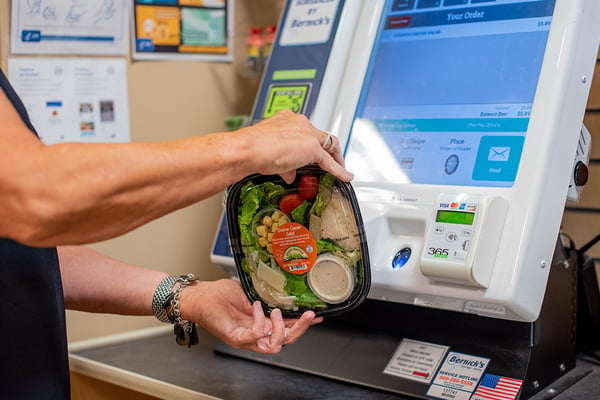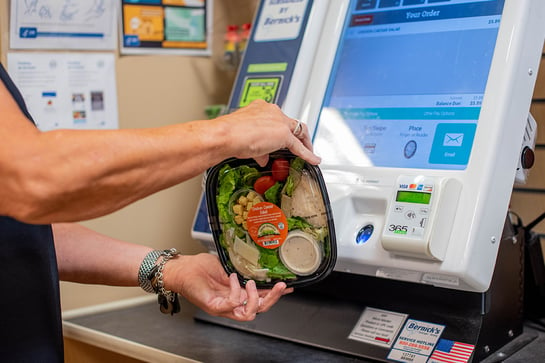Micro markets can offer owners the potential for good revenue due to their unique features, convenience, and ability to cater to customer preferences. However, it's important to note that revenue can vary widely based on factors such as location, product selection, pricing, and customer traffic. Micro markets offer the advantage of extended operating hours, self-service convenience, and a diverse product selection.
Non-automated stores, such as convenience stores or small retail establishments, offer personalized service and a wider range of products. However, they require higher staffing costs and more extensive management
Below, I'll provide a general comparison between micro markets and non-automated stores in terms of revenue potential, along with some estimated statistics to give you an idea of what to expect:
Estimated Profit Range for Micro Markets:
- On average, micro markets can generate between $1,000 to $3,000 in weekly revenue, depending on factors like location, customer traffic, and product assortment
- Profit margins for micro markets typically range from 20% to 40%, depending on product pricing and operational costs
- Return on Investment (ROI) can vary, but many micro market owners aim for a payback period of around 18 to 24 months
Ways to Improve Your Micro Market Sales
Increasing micro market sales involves a combination of strategic planning, customer engagement, and innovative approaches. Just as independent retailers work on marketing and branding efforts to drive sales, you can follow suit when it comes to the micro market you’re promoting at your business or location.
Themed Promotions
Create themed promotions around holidays, special events, or seasonal trends. Offer themed snacks, beverages, and products that align with the theme. Collaborate with local food producers, artisans, or bakeries to offer unique and locally-made products that can't be found elsewhere. Host product-tasting events where customers can sample new items. This encourages exploration and may lead to increased purchases.
Limited-Time Offerings
Introduce limited-time products that create a sense of urgency and excitement. These exclusive items can attract customers looking for something new. Implement a digital rewards program where customers earn points for each purchase. Accumulated points can be redeemed for discounts or free products. Offer bundled packages where customers can buy complementary products at a slightly discounted price compared to purchasing them individually.
Themed Promotions
Highlight healthier options with eye-catching labels or symbols. This can help customers quickly identify choices aligned with their dietary preferences. Create displays that cater to specific customer needs, such as "Workday Boosters" with energizing snacks for busy professionals or "Afternoon Delights" with relaxing treats. Set up interactive displays that engage customers. For example, create a DIY snack station where customers can customize their own snack mixes.
Customer-Generated Content
Encourage customers to share photos of their micro market purchases on social media using a unique hashtag. Feature some of these posts on your micro market's display. Organize friendly challenges among employees to try new products or hit certain purchasing milestones. Offer incentives or rewards for participation. Set up sampling stations with small portions of products for customers to try before buying. This can introduce them to new flavors and encourage purchases.
Discovery
Use digital signage to display dynamic content like rotating promotions, product spotlights, and fun facts about featured items. Place small cards next to products with interesting facts, health benefits, or pairing suggestions. This can prompt customers to try new items. Use surprise discounts or flash sales where the price of select items drops suddenly for a limited time. This element of surprise can encourage impulse purchases.
Storytelling
Share the stories behind certain products, such as the brand's mission or the sourcing of ingredients. This humanizes the products and adds value. Actively seek customer feedback and product suggestions. Implement some of the most requested products to show that you value their input. Hold contests where customers can submit creative ideas for new products. The winning idea can be added to the micro market selection.
Remember that a combination of these strategies, tailored to your specific audience and location, can lead to increased micro market sales. Regularly assess the effectiveness of your efforts and make adjustments based on customer feedback and sales data.
Bernick’s Can Optimize Your Micro Market Revenue
Ultimately, both micro markets and non-automated stores have the potential for good revenue, but micro markets offer certain advantages in terms of convenience, flexibility, and potential for higher sales per transaction. Keep in mind that these estimates are general figures and can vary significantly based on numerous factors. To obtain accurate revenue projections, it's crucial to conduct a thorough market analysis, assess the specific location, understand customer behaviors, and determine the optimal product mix and pricing strategy. All this takes a unique perspective that typically is granted through a dynamic partnership with a micro market distributor who knows the business inside and out.



